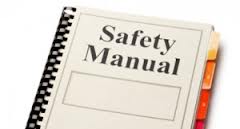 It has always been a standard among health and safety training manuals to incorporate information on personal protective equipment (PPE), emergency evacuation, and incident reporting.
It has always been a standard among health and safety training manuals to incorporate information on personal protective equipment (PPE), emergency evacuation, and incident reporting.
However, this has not been the case lately. An audit has been done by Work Safe Australia and found that a hundred of safety induction manuals from various companies only publish information for the purpose of compliance. Yes, sure is, these compliance policies will protect the employee legally. But those companies that are very efficient in keeping up with work safety policies look at their health and safety manuals differently.
Work health and safety manuals must also include information that motivates staff to work together on safety and fully incorporate immense safety performance culture.
Below is a list of information that will elevate your work health and safety performance to higher levels of effectiveness:
1. Whistle-blower Policies. In order to maintain a high functioning work culture, the rule is to ensure that workers will always feel safe. It is a two-fold mission: safety in voicing out their opinion and physically safe working in an environment.
The employee needs to feel safe when they discuss about work issues. They should be free to offer suggestions. Thus, they should be comfortable to do such and they trust that their company cares for them. The good effect of this motivation is they'll work hard rather than just existing to work and survive without work issues.
Organisations must assign an individual who will be accessible anytime, if anyone encounters work issues. This person will be the one to talk instead of the manager (if the person concerned is not comfortable discussing with immediate supervisor). This is most applicable to dodgy workplace practices where bribery, sexual harassment, workplace hazard neglect are predominant and where managers that work in such a way in their department who might not allow subordinates to feel free to speak up.
2. Align Staff to Conduct Standards. Conduct standards are a great way to align staff to the culture of the organisation. Instead of discussing the "how" and "what" on work safety, it's more appropriate to focus the discussion on explaining the "Why's."
For instance, if the core value of the company is “Integrity” then it should discuss the importance of integrity. Try to make a humanised approach in tackling the conduct standards so that it is friendlier and clearly stated on how to operate in a company. Try to give many examples whenever possible. Add more relevant visual images. What better way to explain your safety message across the organisation, than creating infographics that provide the information as pictures rather than words. Another alternative is to create work safety-training videos that visually explain your work safety policies.
3. The Importance of Teamwork. Another flaw in writing work safety manuals is that it only focuses on letting workers know what they are prohibited to do (from the process perspective). It misses out other important areas like helping the workers understand how staff must work together to communicate about safety. Having each one working as one cohesive team, goes a long way towards enhancing work safety. If everyone cares for each other, then looking out for safety issues becomes second nature.
4. Conduct of Supervisors. Safety performance and staff productivity will be improved once positive communication relations between supervisors and employees are established. It allows workers to comfortably raise work safety concerns which will result to lower incidences of work accidents (if management will immediately act on safety issues).
Supervisors are required to possess excellent people skills to deal with their staff to motivate them to talk about issues. Try implementing codes of conduct for supervisors as well. Communicate openly with frontline staff and senior management, as well as empathise with staff about any complaints.
5. Be friendly. A lot of organisations tend to write safety manuals that are solely written from a legal perspective, rather than the purpose of protecting the staff itself. Write the manual, as if you're talking to your best friend or child. Write it from a perspective that you are a responsible individual in charge of taking care a large group of human beings. This is no time to sound like a lawyer. Do not use negative language. For instance: write "Remain calm" instead of "Don't panic.”


